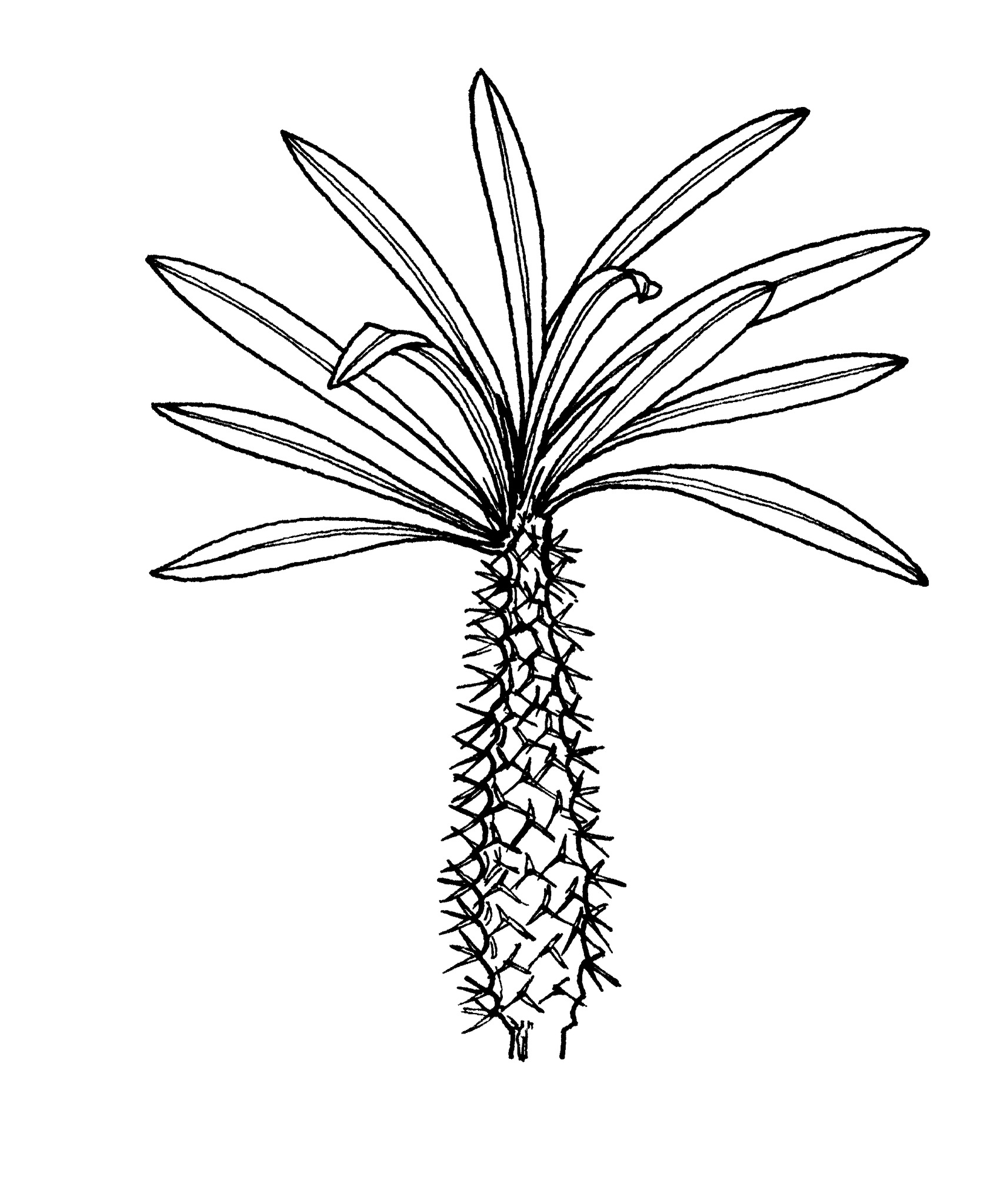
From the Greek pachy— thick, and podus — footed, alluding to the thickened (pachycaul) stems.
Subshrubs, shrubs or small trees, mostly deciduous; latex clear. Stems fleshy-succulent, solid, with spines in pairs or 3s. Leaves spirally arranged, usually clustered at apices, sessile to stalked; blade well developed; colleters absent at base. Inflorescence terminal or axillary, thyrsoid. Flowers often sweetly scented, stalked. Corolla funnel-shaped to salver-shaped; tube cylindrical; lobes convolute in bud, overlapping to the right. Corolline corona absent. Stamens enclosed, attached near middle of tube, converging to and sticking to style head. Disk absent. Fruit of 2 woody follicles, of separate carpels, dehiscent along ventral suture. Seeds numerous, flattened, oblong, not winged, comose at micropylar end.
One species is commonly cultivated, most other species are occasionally grown by succulent plant enthusiasts.
Frost-sensitive.
Cuttings (rarely) or seeds.
Fleshy-succulent stems armed with spines in 2s or 3s.
16 species in southern Africa and Madagascar.
Pichon (1949), Codd (1963), Rauh (1972, 1995), Lavranos (1996), Rapanarivo et al. (1999), Rowley (1999).
Source: (2002). Apocynaceae. In: . Horticultural Flora of South-eastern Australia. Volume 4. Flowering plants. Dicotyledons. Part 3. The identification of garden and cultivated plants. University of New South Wales Press.
